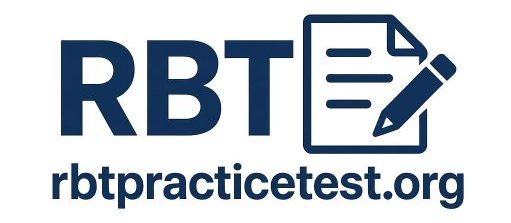Tracking progress in Applied Behavior Analysis (ABA) hinges on accurate data collection and clear visual representation. Registered Behavior Technicians (RBTs) rely on up-to-date graphs to spot trends and make sense of complex behavior patterns. Whether we’re charting daily progress or comparing responses before and after an intervention these visual tools help us interpret results quickly and share insights with families and team members.
This guide breaks down how to enter data and update graphs, the importance of accurate data and graphing in ABA, explores the core elements of effective graphs and outlines the step-by-step process for creating and maintaining visualizations. By mastering this process, you’ll strengthen your ability to communicate behavioral trends and support data-driven decision-making with confidence.
How to enter data and update graphs?
RBTs enter data by using electronic systems that streamline the process in ABA sessions. We record observations, target responses, and session notes directly into customizable software or apps. These platforms let us log each event as it happens, which supports accuracy and reduces data loss. For example, RBTs might use a tablet at the session to immediately register correct responses, prompt levels, or maladaptive behaviors.
RBTs update graphs in real-time as new data points get entered. Electronic data collection tools automatically generate visual graphs reflecting the child’s current progress. We filter these graphs by date, target behavior, or practitioner, which helps us analyze trends or compare outcomes between different RBTs. If data looks inconsistent across two RBTs, we’re able to identify and resolve issues quickly.
Data storage remains secure because the software includes backup and encryption features. Summary reports and averages can be generated instantly from the latest data and attached to clinical documentation.
Why are data and graphs important?
Accurate data and clear graphs form the backbone of effective ABA practice for RBTs. Data provides objective evidence for decisions about a client’s treatment, allowing us to identify trends, unexpected patterns, and changes over time. For example, analyzing behavior frequency across sessions reveals increases or decreases linked to specific interventions.
Efficient data analysis improves operational workflows by highlighting bottlenecks and inefficiencies. When monitoring session data for each RBT, the system exposes inconsistencies or anomalies that may impact intervention fidelity.
Graphs transform complex data into digestible visuals, making key information accessible to both technical and non-technical stakeholders. Visual trends in line or bar graphs, such as sudden spikes in challenging behaviors, make it easier for teams and families to interpret progress.
Continuous updates to graphs maintain data accuracy and keep insights current. Real-time graph adjustments support timely strategy modifications if the data shows changing patterns. With updated graphs, supervisors and clinicians detect the impact of new interventions sooner.
Key elements in an ABA Graph
Every ABA graph displays core elements that support precise data interpretation and visual analysis. RBTs can use these elements to track progress, identify patterns, and communicate outcomes to all stakeholders.
- X-Axis (Horizontal: Time reference)
The x-axis charts time metrics such as session dates, daily intervals, or specific event instances, giving us a consistent timeline for each behavioral data point.
- Y-Axis (Vertical: Behavior measurement)
The y-axis reflects the dependent variable we’re measuring, such as frequency, duration, or latency of the target behavior, allowing us to quantify progress on a standardized scale.
- Data points (Observation recording)
Each plotted point represents a single observation within a session. For example, these points can show how many times a child exhibited a target behavior on Day 3 of intervention.
- Trend line (Performance trajectory)
The trend line links data points within the same phase, helping us quickly see upward, downward, or stable behavior patterns across sessions.
- Condition change lines (Phase indicators)
Vertical lines indicate phase changes, such as switching from baseline to intervention. These lines separate conditions to clarify the impact of interventions.
- Condition labels (Phase Descriptions)
Labels above or below condition change lines describe each phase, like “Baseline” or “Intervention,” making phase context immediately clear.
- Axis and figure caption (Clarification and description)
Both axes get clear titles (e.g., “Sessions,” “Frequency of Behavior”) and every graph includes a brief caption stating what the graph shows, such as the purpose and key variables.
These structural elements ensure every ABA graph delivers consistent, actionable insights that support data-driven clinical decisions and effective communication.
Below is the function and examples of key elements in an ABA graph:
| Element | Function | Example Use |
| X-Axis | Time reference | Days 1–10, sessions, or weeks |
| Y-Axis | Behavior measurement | Counts, minutes, percentage |
| Data Points | Observation recording | Session 5: 3 instances of target behavior |
| Trend Line | Performance trajectory | Increasing trend post-intervention |
| Condition Change Lines | Phase indicators | Line at session 7, marking intervention start |
| Condition Labels | Phase descriptions | “Baseline”, “Reinforcement”, “Extinction” |
| Axis/Figure Caption | Clarification and description | “Graph of frequency over 14 days, 2 interventions” |
Steps in the graphing process
1. Identify the Audience
Understanding the audience helps select graphing approaches and data displays that suit their knowledge and purpose. RBTs match chart complexity and terminology to family members, supervisors, or external stakeholders to ensure the data and graphs are meaningful.
2. Collect and Prepare Data
Gathering relevant data ensures graphs accurately reflect session outcomes. RBTs record discrete events, session notes, and target behaviors directly into electronic systems, then transform and organize this data into consistent formats for analysis.
3. Select the Graph Type
Choosing a graph type that matches our data and message increases interpretability. RBTs review the nature of the behavior (such as frequency or duration) and intervention phase, then select line graphs, bar charts, or scatterplots based on established guidelines and tools like “From Data to Viz”.
4. Sketch and Create Visualizations
Drafting and building visualizations allows us to preview trends and data clarity before sharing. Using tools like ggplot2 or ABA-specialized software to create initial drafts and adjust colors, axes, and condition change markers.
5. Refine and Update with Feedback
Reviewing graphs with team members and family ensures accuracy and effectiveness. We update formatting, labels, or segmentation based on clarity and insight generation before saving finalized versions.
6. Enter and Update Data Continuously
Entering new data and updating graphs maintains up-to-date visual representations of progress or regression. As we add more sessions, graphs auto-update to reflect changes, supporting ongoing analysis and rapid intervention adjustments.
Following these steps supports effective data visualization and rapid clinical decision-making in ABA settings.

